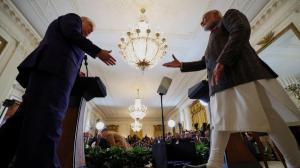By Prasanna Shirol
Rare diseases pose a significant health challenge, affecting a minority of individuals but collectively impacting millions worldwide. Rare diseases are conditions that affect a relatively small number of people and hence do not get the focus on government health priorities in a resource-constrained setting such as India. Globally, there are around 7,000 rare diseases affecting 300 million people, with a significant portion being children. Due to the lack of epidemiological data in the country, it has been difficult to estimate the number of persons suffering from these diseases in India. However, by extrapolation, India should have around 70 million patients with these conditions, underscoring the pressing need to address this healthcare challenge urgently. Therefore, it is essential to focus on strengthening and utilizing the existing public health framework for the optimal usage of healthcare resources.
To address these challenges, we must include taking measures that can connect across fragments and facilitate the right sort of intervention for the right patient. Firstly, robust mass awareness programs targeting not only the general population but also healthcare professionals are essential. Awareness among the public is essential for early diagnosis and timely treatment. The inability to diagnose is also a consequence of the lack of importance given to these diseases. Most physicians do not receive any training in rare diseases during their studies. Lack of awareness and training translates to incapacity to help people with rare diseases. Also, official recognition of World Rare Disease Day by the government could serve as a powerful mechanism for raising awareness and rallying support from all stakeholders. These steps aim to enhance understanding and recognition of rare diseases, facilitating early diagnosis and intervention, which is crucial for improving patient outcomes.
Despite the existence of the National Program for Rare Diseases (NPRD), jointly managed by central and state government institutions, there remains a critical need for greater involvement and ownership, especially from state governments. Strengthening infrastructure and ensuring timely patient support, particularly through the establishment of specialized Centers of Excellence (COEs) within state hospitals, is paramount. These COEs should have multidisciplinary teams equipped to provide comprehensive care for individuals with rare diseases, addressing their diverse medical, psychological, and social needs.
Moreover, there is an urgent need to shift the focus towards long-term supportive care, recognizing that many rare diseases require ongoing management and monitoring. This entails not only providing access to treatment but also offering holistic support services that encompass rehabilitation, palliative care, and psychosocial support for patients and their families. Integration of private hospitals into the RD care ecosystem can further enhance access to specialized care and innovative treatments. By forging partnerships with private healthcare providers, India can harness additional resources and expertise to meet the complex needs of individuals with rare diseases.
There has been growing advocacy for policy measures aimed at addressing various aspects of rare disease management, ranging from early detection to long-term supportive care. More focus has to be put on preventive strategies. Newborn screening initiatives and mandatory genetic counselling and screening for high-risk pregnancies have emerged as crucial strategies for early identification and intervention, enabling timely access to treatment and support services for affected individuals and their families. Furthermore, the involvement of state governments, particularly in the establishment and operation of Centers of Excellence (CoEs), plays a pivotal role in driving research, enhancing patient care, and promoting collaboration across healthcare institutions.
The significance of patient data in rare disease management is often overlooked but remains crucial for understanding disease progression, guiding treatment decisions, and advancing research. However, India faces challenges in managing patient data effectively, with many government institutions lacking organized electronic medical records (EMRs). Additionally, limited adoption of EMRs in the private sector and interoperability issues further hinder data utilization. Despite these obstacles, India holds a wealth of rare disease patient data that, if leveraged efficiently, could drive significant advancements in research and clinical care. Initiatives to ensure patient data ownership, coupled with the adoption of blockchain technology for transparency, are key steps toward unlocking the full potential of EMRs in rare disease management.
Moving forward, mandatory submission of patient data to the Indian Council of Medical Research (ICMR) registry and collaborative partnerships between institutions and private entities are essential. Moreover, a shift in funding agency outlook towards inclusive policies and leveraging new technologies is necessary to accelerate progress in rare disease management.
Addressing the above issues will require a coordinated strategy that engages healthcare professionals, patients, and government authorities. By approaching the problem from multiple angles, such a system would be instrumental in enhancing the quality of care, improving outcomes, and meeting the clinical needs of individuals affected by rare diseases.
(The author is Co-founder & Executive Director, Organization for Rare Diseases India (ORDI). Views expressed are personal and do not reflect the official position or policy of the FinancialExpress.com.)









